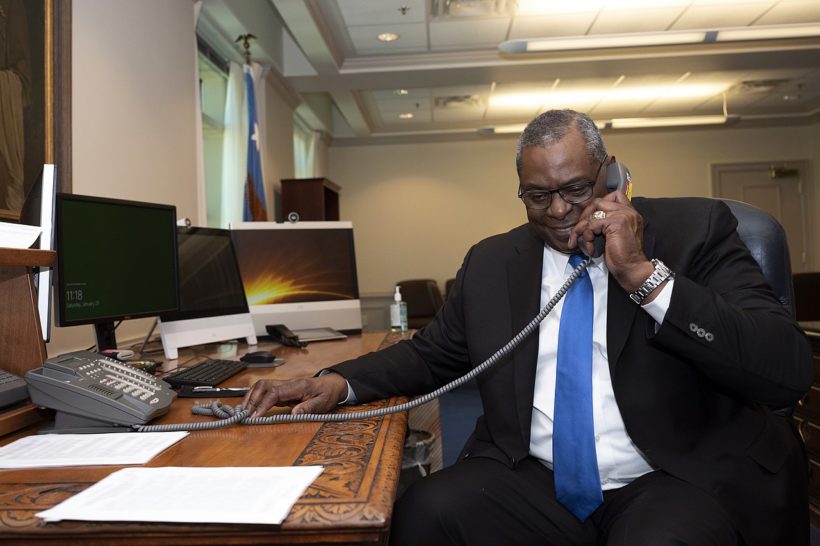The strategic goal of “weakening Russia” is playing with fire—even nuclear fire—and to allow the war to go on indefinitely, or to escalate, at the expense of the Ukrainian people is cruel, dangerous, and unacceptable.
By John Burroughs*
Secretary of Defense Lloyd Austin provided a revealing and disturbing glimpse into a darker element of US policy at a press conference held April 25 at the Poland/Ukraine border. The press event followed a trip to Kyiv by Secretary of State Antony Blinken and Austin.
Austin was asked how he defines “America’s goals for success” in Ukraine. He first said that the US wants to see “Ukraine remain a sovereign country, a democratic country, able to protect its sovereign territory.” But then he added: “We want to see Russia weakened to the degree it cannot do the kinds of things that it has done in invading Ukraine.” I had feared that geopolitical strategizing is affecting the US approach, but this is the first public indication of that I have seen.
It cannot be said too strongly: The US government must not be guided by any notion that a quagmire in Ukraine would drain Russian resources, diminish Russian influence and power globally, and possibly lead to regime change. The United States instead should do all within its power to help bring the war to a close rapidly in order to limit suffering; to eliminate risks that the conflict will widen and escalate, possibly to nuclear war; and to limit the negative global economic and food security repercussions.
A broader reason for determined efforts to end the war is the need to work toward restoring a relationship with Russia enabling cooperation on nuclear arms control and disarmament, climate protection, public health, and other vital matters of global concern.
US energy in helping bring the war to a close is also appropriate in view of the political responsibility of the United States, together with NATO, since the late 1990s in helping to create the conditions for a crisis. Actions having this effect included precipitously withdrawing from the Anti-Ballistic Missile Treaty in 2003, subsequently establishing missile defense facilities in Romania and Poland, and opening the door to Ukraine’s membership in NATO in 2008.
In a recent paper, End the War, Stop the War Crimes, Lawyers Committee on Nuclear Policy outlines already widely discussed elements of an approach to ending the war. In brief, Russia and Ukraine should quickly agree to a cease-fire to enable negotiation of a settlement.
Negotiations should then aim to end the war immediately and to resolve the overarching disputes concerning governance of the Donbas region and the status of Crimea. A long-term consultative mechanism could be put in place to resolve time-intensive or recurring issues and to help maintain peace and human security. Ukraine appears ready to forswear any possibility of joining NATO, so long as some form of guaranteed neutrality can be established, but seeks to join the European Union. The overall aim should be the preservation of Ukraine’s sovereignty and territorial integrity in accordance with the UN Charter.
In addition to any role they can play, behind the scenes or not, in bringing about a cease-fire and negotiating a settlement, the United States and other states must be ready to lift war-related sanctions and to accept and support some form of neutrality for Ukraine should Ukraine choose that.
Russia’s war on Ukraine is already causing appalling suffering and devastation. It is playing with fire—even nuclear fire—to allow the war to go on indefinitely and potentially to widen and escalate, at least partly with the aim of weakening Russia. The right course is to make ending the war on acceptable, if not perfect, terms the highest priority.
John Burroughs is Senior Analyst for the New York City–based Lawyers Committee on Nuclear Policy.
This article first appeared in Common Dreams and has been republished by kind permission of the author.






